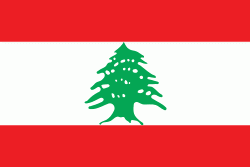Sidon
Sidon (צִידוֹן, Ṣīḏōn) known locally as Sayda or Saida (صيدا Ṣaydā), is the third-largest city in Lebanon. It is located in the South Governorate, of which it is the capital, on the Mediterranean coast. Tyre to the south and Lebanese capital Beirut to the north are both about 40 km away. Sidon has a population of about 80,000 within city limits, while its metropolitan area has more than a quarter-million inhabitants.
The Phoenician name Ṣīdūn (???, ) probably meant "fishery" or "fishing town". It is mentioned in Papyrus Anastasi I as Djedouna. It appears in Biblical Hebrew as Ṣīḏōn (צִידוֹן) and in Syriac as Ṣidon (ܨܝܕܘܢ). This was Hellenised as Sidṓn (Σιδών), which was Latinised as Sidon. The name appears in Classical Arabic as Ṣaydūn (صَيْدونْ) and in Modern Arabic as Ṣaydā (صيدا).
As a Roman colony, it was notionally refounded and given the formal name Colonia Aurelia Pia Sidon to honour its imperial sponsor.
In the Book of Genesis, Sidon was the first-born son of Canaan, who was a son of Ham, thereby making Sidon a great-grandson of Noah.
During the crusades, Sidon was known in Latin as Sagittus and in French as Saete, Sayette or Sagette.
The Phoenician name Ṣīdūn (???, ) probably meant "fishery" or "fishing town". It is mentioned in Papyrus Anastasi I as Djedouna. It appears in Biblical Hebrew as Ṣīḏōn (צִידוֹן) and in Syriac as Ṣidon (ܨܝܕܘܢ). This was Hellenised as Sidṓn (Σιδών), which was Latinised as Sidon. The name appears in Classical Arabic as Ṣaydūn (صَيْدونْ) and in Modern Arabic as Ṣaydā (صيدا).
As a Roman colony, it was notionally refounded and given the formal name Colonia Aurelia Pia Sidon to honour its imperial sponsor.
In the Book of Genesis, Sidon was the first-born son of Canaan, who was a son of Ham, thereby making Sidon a great-grandson of Noah.
During the crusades, Sidon was known in Latin as Sagittus and in French as Saete, Sayette or Sagette.
Map - Sidon
Map
Country - Lebanon
 |
 |
| Flag of Lebanon | |
The earliest evidence of civilization in Lebanon dates back to 5,000 BCE. From c. 3200–539 BC, it was home to the flourishing Phoenician civilization before being annexed by various Near Eastern empires. In 64 BC, the Roman Empire conquered the region, and the region became a major center for Christianity under the Byzantine Empire. In the 7th century, the Muslim conquest of the Levant established caliphal rule. The 11th century saw the start of the Crusades and the establishment of Crusader States in the region only for it to be later reclaimed by the Ayyubids and Mamluks before being ceded to the Ottoman Empire in the 16th century. Under Sultan Abdulmejid I, the first Lebanese protostate took form in the 19th century as the Mount Lebanon Mutasarrifate, created as a home for the Maronite Christians under the Tanzimat reforms.
Currency / Language
| ISO | Currency | Symbol | Significant figures |
|---|---|---|---|
| LBP | Lebanese pound | لل | 2 |
| ISO | Language |
|---|---|
| AR | Arabic language |
| HY | Armenian language |
| EN | English language |
| FR | French language |















